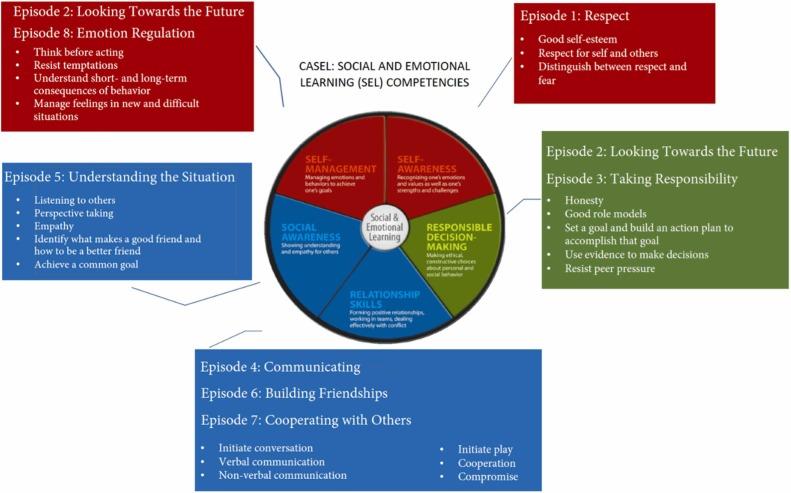How to Measure the impact of SEL Programs: Proven Strategies for Meaningful results
social-emotional Learning (SEL) has rapidly become an essential focus in educational settings worldwide. Though, ensuring that SEL programs deliver measurable, lasting benefits requires robust assessment frameworks and proven evaluation strategies. In this comprehensive guide, we’ll explore practical, research-backed methods to measure the impact of SEL programs—helping schools, educators, and stakeholders see meaningful results that go far beyond the classroom.
Introduction: Why Measure SEL Program Effectiveness?
In today’s data-driven world, being able to quantify the outcomes of any educational initiative is critical. The same applies to SEL programs, which aim to foster students’ emotional intelligence, interpersonal skills, and overall well-being. Measuring the impact of SEL programs not only validates your investment but also guides future improvements and demonstrates accountability to parents, administrators, and the wider community.
The Benefits of Evaluating SEL Program Impact
- Identifies what’s working: Pinpoints the strengths of your program, ensuring resources are used effectively.
- Highlights areas for advancement: Provides evidence for adapting and tailoring interventions to meet specific student needs.
- Supports funding and policy decisions: Data-driven results attract funding and policy support for scalable SEL initiatives.
- Boosts stakeholder confidence: Demonstrates commitment to student advancement and clarity in program effectiveness.
Proven Strategies to Measure the Impact of SEL Programs
A multi-faceted approach is the most effective way to capture the full effects of SEL initiatives. Here are the top strategies for a meaningful assessment:
1. Define Clear, measurable Outcomes
start your evaluation by identifying which SEL competencies you wish to improve—such as self-awareness, social awareness, relationship skills, and responsible decision-making. Break these down into specific, observable behaviors or skills. Such as:
- Increase in students’ ability to express emotions constructively.
- Improved conflict resolution skills.
- Greater empathy and respect among peers.
2. Use Validated Assessment Tools
To measure SEL effectiveness, utilize assessment instruments that are research-based and validated for reliability. Some commonly used tools include:
- Devereux Student Strengths Assessment (DESSA): Focuses on social-emotional competencies in youth.
- Panorama Social-Emotional Learning Survey: Gathers perspectives from students, teachers, and families.
- SELweb: Online platform that directly assesses students’ SEL skills through interactive tasks.
3. Collect Multiple Types of Data
Balanced evaluation combines quantitative data (like surveys) with qualitative insights (like interviews). Key sources include:
- Pre- and Post-Program Surveys – Assess changes in student perceptions and skills.
- Teacher Observations and Ratings – Capture in-class behaviors and growth.
- Student Self-Assessments – Encourage learner ownership of emotional growth.
- Focus Groups & Interviews – Gather deeper narratives from students, staff, and parents.
- School Climate Data – Review attendance, discipline referrals, and peer relationships.
4. Set a Baseline and Track Progress Over Time
Conduct assessments before and after implementing SEL programs to establish a clear baseline. Schedule follow-up measurements at regular intervals (e.g., each semester or school year) to monitor trends and sustained growth.
5. Analyze & share Results with Stakeholders
Turn your findings into user-kind reports or data dashboards. Share results with key stakeholders and use the data to drive informed conversations about necessary changes or ongoing successes.
Practical Tips for Effective SEL Impact Measurement
- Involve multiple voices: Cast a wide net by gathering input from students, parents, teachers, and community members.
- Maintain confidentiality: Protect privacy to ensure honest, accurate responses.
- Integrate with academic data: Consider how SEL outcomes correlate with academic performance, attendance, and behavior.
- Focus on growth, not just scores: Emphasize personal development and ongoing improvement rather than fixed benchmarks.
Case Study: Measuring SEL Program Success in Action
Lincoln Middle School implemented a year-long SEL curriculum targeting communication and emotional regulation.Before starting, students completed the DESSA self-assessment and participated in teacher-led interviews. Throughout the year:
- Teachers logged weekly observations focusing on peer interactions and conflict management.
- Monthly student reflection journals were reviewed for qualitative evidence of social-emotional growth.
- After one year, DESSA scores improved by an average of 25% in emotional regulation, while office referrals for behavioral incidents dropped by 35%.
The Results: The combination of quantitative and qualitative measures gave staff a holistic view of progress, enabling targeted adjustments and new training for educators. Sharing results with parents and district officials built trust and justified continued investment in SEL programming.
First-Hand Experience: Teacher Insights on SEL Evaluation
“When we started using self-assessments and classroom observation tools, we finally saw students taking ownership of their feelings. Our staff grew more confident in reinforcing SEL lessons, and families noticed positive changes at home as well.Assessment isn’t about judging—it’s about understanding growth.”
— Ms. Clara Rodriguez,5th Grade teacher
Overcoming Common Challenges in SEL Program Measurement
Evaluating the impact of SEL programs brings unique challenges. Here’s how to address them:
- Subjectivity of Skills: Use multiple data sources and tools to offset individual biases.
- Time Constraints: embed data collection into existing routines (e.g., weekly reflections).
- Lack of buy-In: Provide professional development and share success stories to highlight benefits.
- Data Interpretation: Work with SEL experts or data analysts to accurately interpret complex results.
Conclusion: Building a Culture of Evidence-Based SEL
Measuring the impact of SEL programs is more than a box-ticking exercise—it’s a transformative process that informs better teaching, learning, and community well-being. By using proven strategies and embracing both the science and the human side of SEL, educators can create powerful, lasting change.Start with clear goals, select the right tools, involve your whole school community, and celebrate every step of growth. Meaningful results are within reach when your approach is thoughtful, informed, and truly student-centered.
Ready to Evaluate Your SEL Program?
Empower your school or institution with the right data and insights.Download our comprehensive SEL Evaluation Toolkit or contact us for a consultation on designing an SEL impact assessment customized for your needs.

